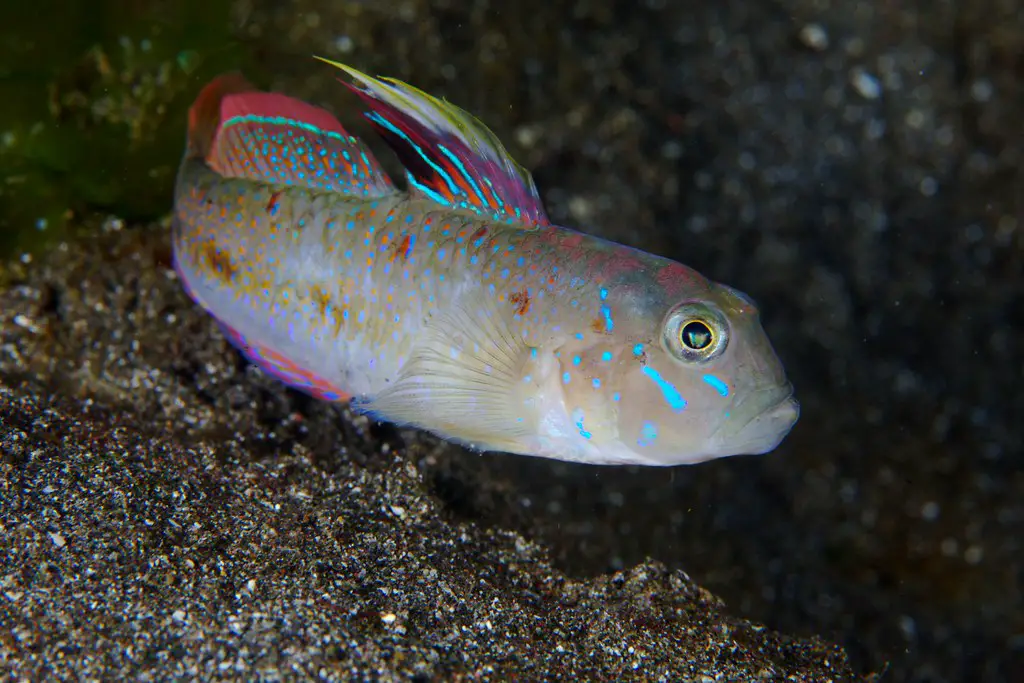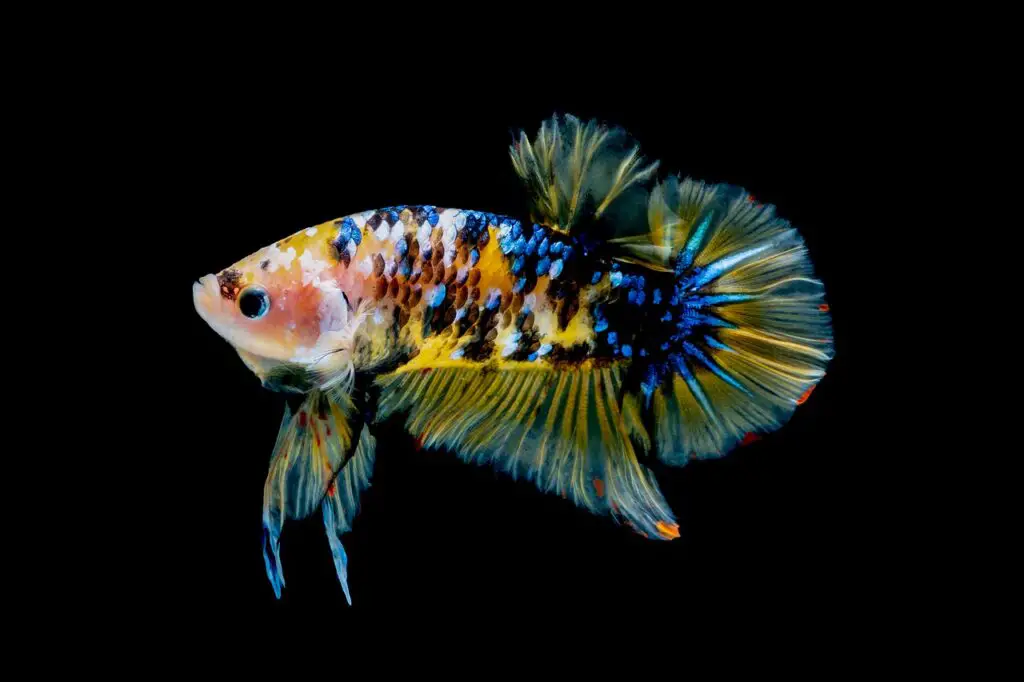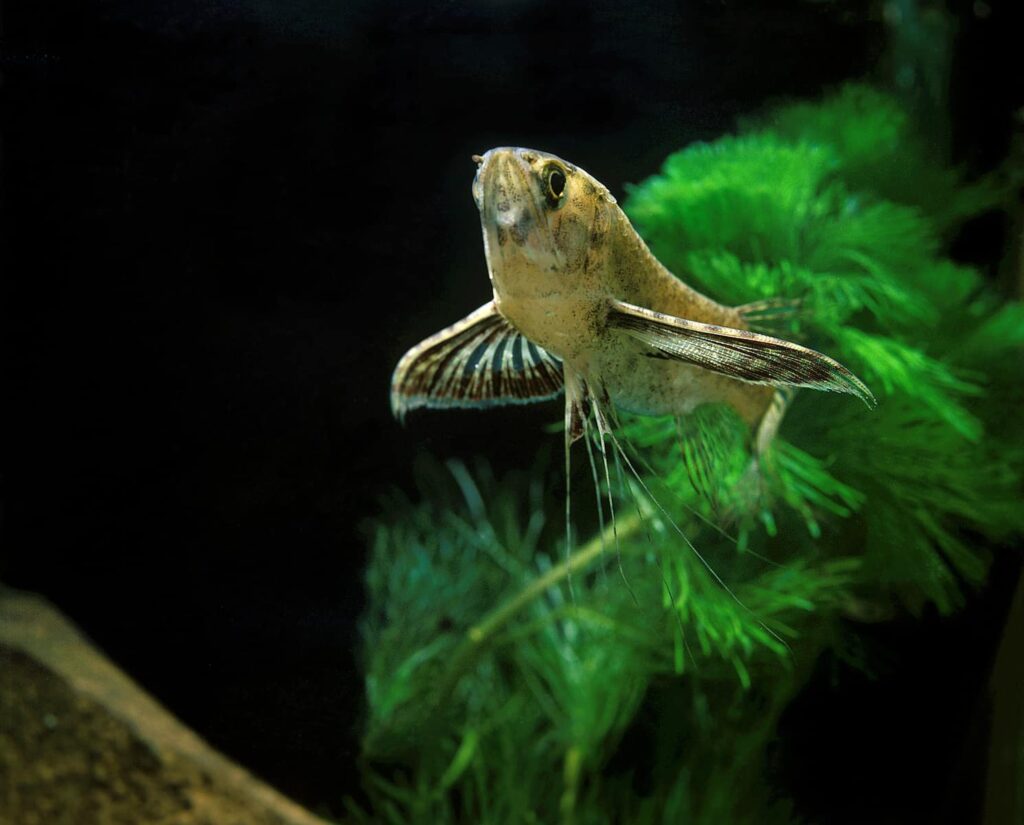Gobies (GOBIIDAE)
Gobies are some of the most common, and most rewarding, fish you’ll come across in home and specialist tanks. Did you know that there are more than 2,000 different types of Goby all over the planet? Well – that applies to the larger Gobiidae family, in any case. These nifty-looking finned torpedoes are tropical fish that are sure to liven up your brackish tank.
Gobies can live in freshwater, too, but for the purpose of this guide, we’ll focus on their brackish habits.
- Fish Lifespan: Up to 10 Years
- Tank Size: At Least 10 Gallons
- Water Temperature: Between 73F and 85F
- pH: Between 7.0 and 8.5
- Hardness: Between 12 and 18 dH
- Compatibility: Compatible with Monos, Mollies and Colombian Shark Catfish
- Fish Size: Up to 4 Inches (Varies)
How do you take care of Gobies?
Gobies tend to make fantastic beginner pets. This is because they are pretty resilient, as well as fairly mild mannered on their own. They will also do well in tanks of various sizes, meaning that you won’t have to invest in a massive tank system unless you intend to bring a bigger community into the mix.
Gobies tend to live for years and years. Providing you make sure their water supply is at the right pH level and temperature, and that they have a variety of food to eat, you likely won’t have much of a problem. As you can see from our key statistics on the Goby, they don’t tend to be some of the most demanding brackish creatures, so you will probably find it pretty easy to house them in your existing tank.
Are Gobies aggressive?
This largely depends on the type of Gobies you have in your tank. However, they are generally non-aggressive on the whole.

There is some discrepancy in terms of advice on the Goby fish as they are seen as an invasive species in the wild. This means that they propagate very quickly and can eat up food that’s meant for other creatures, too!
However, you will probably find that the average Goby is pretty happy to persist on its own. There are some which can be aggressive due to their eyesight, but as with all brackish fish, you are going to find there are some which are more sensitive than others.
Are you supposed to kill Goby fish?
Don’t kill Goby fish in your tank! In the wild, the Goby is an invasive species in many cases – meaning that there have been programs launched where they are fished out to avoid choking other communities of fish.
Gobies do breed very quickly, which means buying a larger tank, if you know you have a fair ratio of male to female, is always a good idea. Otherwise, it’s probably worth setting up a separate tank to raise Gobies in.
What does a Goby fish eat?
Goby fish are carnivorous, though they aren’t particularly picky when it comes to finding something tasty to nibble on.
Therefore, a good idea when raising Gobies of any species is to line up some live food as well as some frozen bits and pieces. These fish love a good bit of variety, as do most – which means you should probably consider casting in a few bloodworms and shrimp, too.
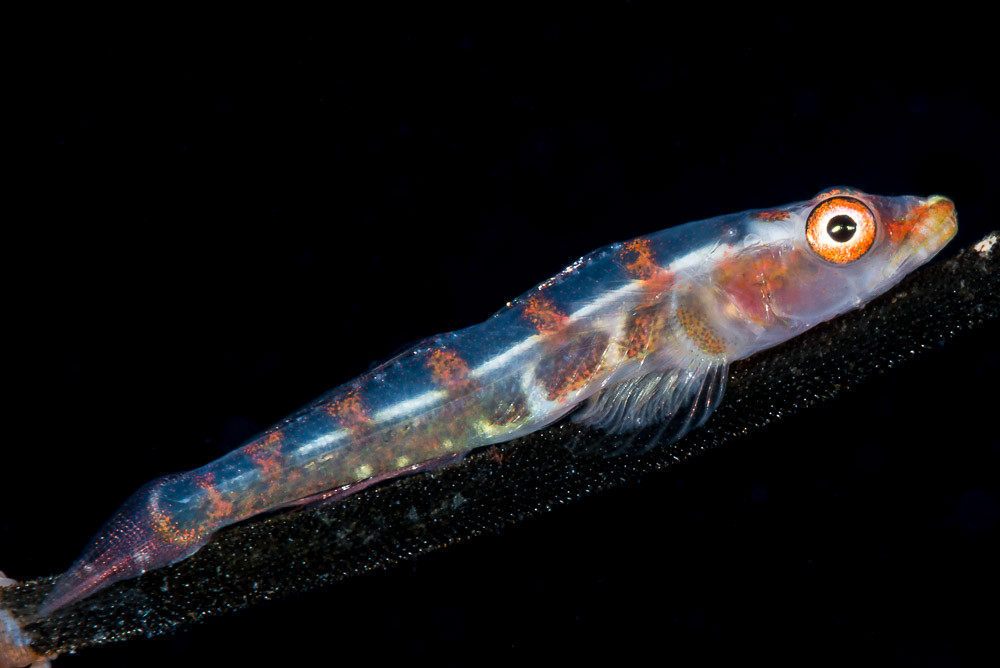
As Gobies can be invasive, they can have a habit of gobbling up food in the tank that’s meant for others to share. Therefore, you need to make sure that your other fish get a fair cut! This is why setting up a large tank for your Gobies and wider community is an excellent idea. It’ll allow you to set up zones for them and to make sure that they ‘know their place’.
What’s the difference between Gobies and Blennies?
Some fish keepers find it hard to tell the difference between Gobies and Blennies as they can have similar temperaments and are similar in size. The fact is, there are far more types of Goby out there than there are types of Blenny!

The easiest way to tell Gobies and Blennies apart is to take a look at the way their bodies taper. The Goby has a resting, straight body, whereas the Blenny tends to take more of a curvature. Gobies also have pelvic fins which fuse to their bodies.
If in doubt, take a look at the wide variety of different Gobies and Blennies out there! Your local fish keeping or aquarium expert will be able to help advise you, too.
Can Gobies live out of water?
Believe it or not, there is a species of fish belonging to the Gobiidae family that can breathe air out of water! This curious critter is the Mudskipper. The Mudskipper also belongs to the Oxudercidae family, making it a bit of an oddity.
However, if you don’t own Mudskippers, it’s probably not a good idea to test the fish out of water theory on your Gobies! The fact of the matter is, fish need water to breathe – and if in doubt, don’t ever go against this rule.
If you are concerned about whether or not your fish should be breathing air or water, make sure to consult your dealership or your local aquarium / fish keeping expert. It’s pretty cool to have fish that breathe fresh air, but it’s certainly not risking their health if you’re really unsure if they can actually do it.
Keep in mind, too, that some fish that can breathe fresh air might jump out of the tank! Therefore, be sure to place a lid on your aquarium, if appropriate, if there is any chance of this occurring. The last thing you are going to want is a genuine fish out of water moment!
Can Gobies live together?
It’s a bit of a puzzle. Technically, yes, you should be able to keep Gobies together as they are not very aggressive. However, as with many fish in brackish water or otherwise, they can sometimes get quite territorial.
This means that you may find some male Gobies vying for territory, food or space. Therefore, if you do want to mix Gobies together in a single community, you should be extra careful to give them lots of room to swim around in. This is why the golden rule of fish keeping is to go as large as you feasibly can on the tank front!

There are also mixed opinions on whether or not you should mix different types of Goby together. Of course, as there are multiple different types of species when it comes to this fish, temperaments and demands are going to differ. As there are thousands of Gobies out there, it’s not always going to be easy to know which are going to live happily together over time.
Therefore, our advice would always be to take a closer look at the different types of Goby out there and to research into the specific species that interest you the most. There are plenty of compatibility guides out there which are likely to give you detail on which Gobies can live with each other in the most harmony.
Are Gobies hardy fish?
Yes, Gobies are surprisingly hardy. Despite being fairly small critters, these fish can do well on their own in various conditions without falling ill. However, it’s always a good idea to make sure that you keep an eye on the health of your Gobies, as they can still succumb to all kinds of conditions and diseases that befall other brackish fish.
As mentioned, there are thousands of different types of Goby out there, meaning that hardiness and resilience may differ from case to case. Our advice generally would be to look at the individual species of Goby you are raising, and make sure to seek medical or veterinary advice if you are unsure of how to care for them properly.
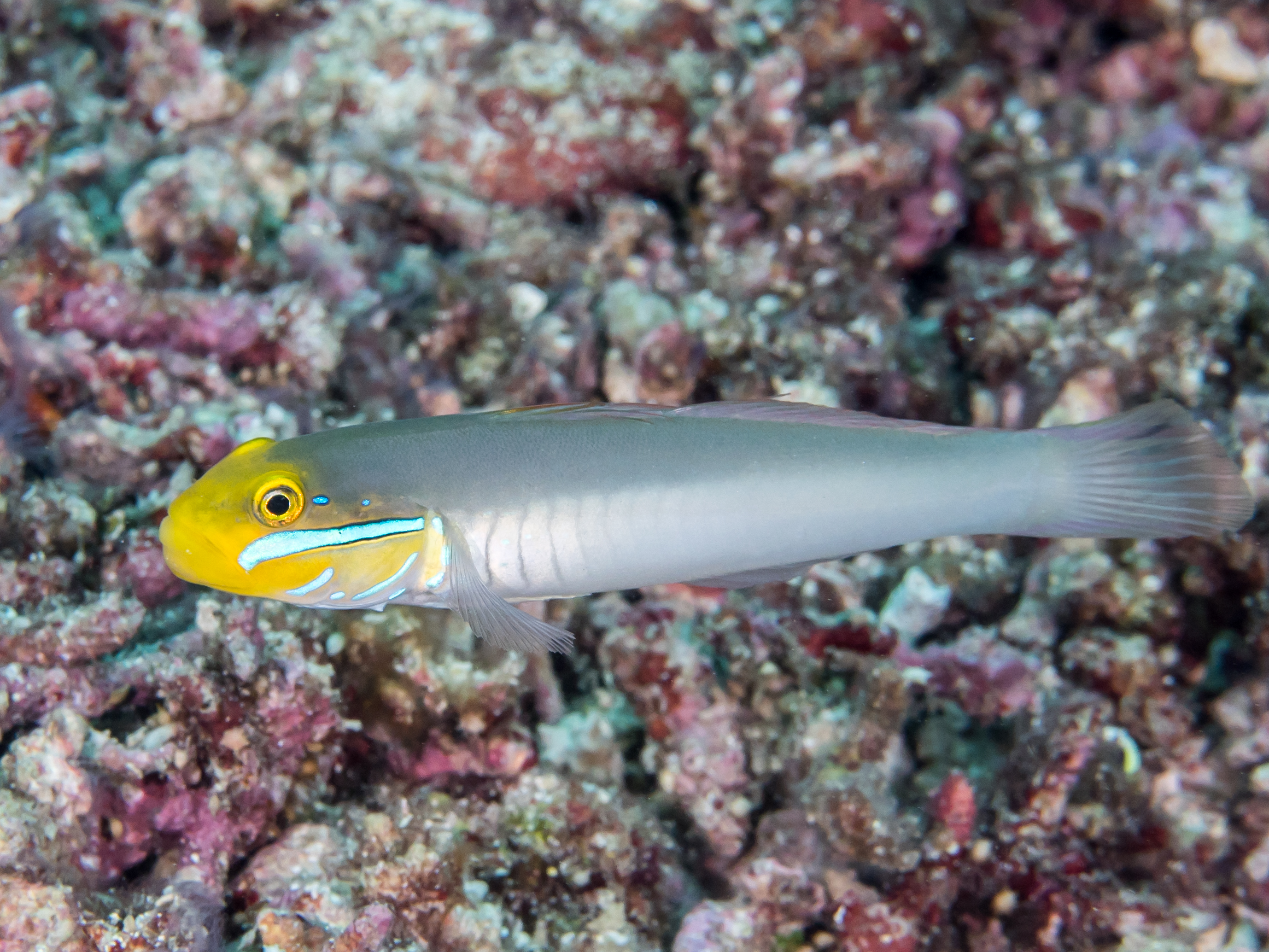
Generally, providing you provide these fish with optimum quality in water, and change it regularly, you likely won’t have much to worry about.
Do Gobies eat algae?
If you’re looking for a fish that loves chowing down on algae, then a Goby probably isn’t your best choice. These fish tend to go for meaty morsels, which is why they are famous for their carnivorous natures.
If you are looking for fish that will happily munch through that nuisance algae, try looking for a species or two which will happily tuck into all kinds of food. Herbivores and omnivores are normally good picks in this regard.
Should I get a Goby?
There are no reasons why you can’t make Gobies into fantastic pets for your tank! Relatively unassuming and great brackish fish for beginners, these critters are wonderful if you are looking for placid swimmers who will liven up the look and atmosphere of the water.
Beginners should look for common Gobies, but with thousands of different species and types of this fish out there, there are no reasons why you can’t mix things up a bit and go a little left of field.
